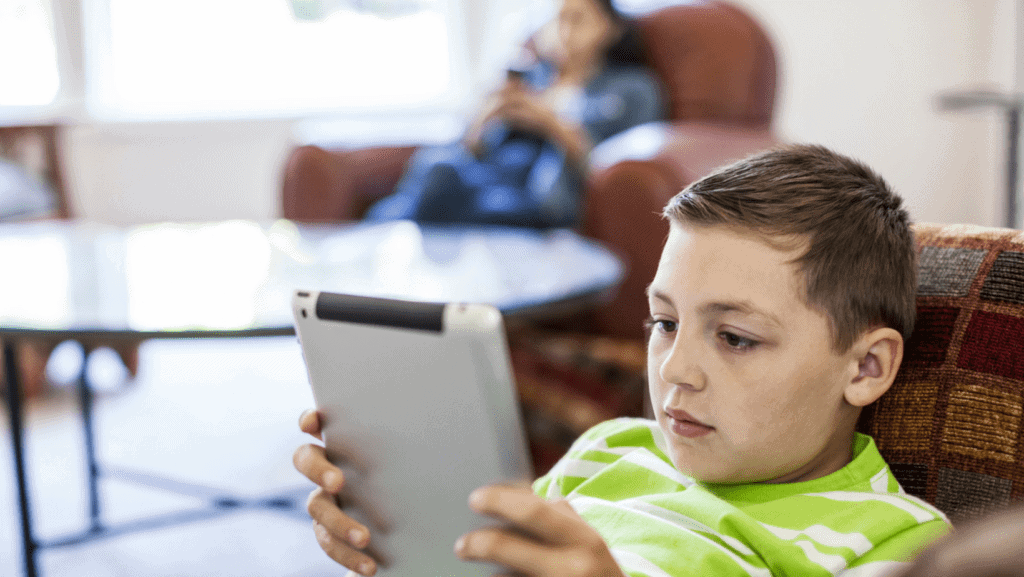Key Points
Question Does limiting recreational screen media use increase habitual physical activity in children?
Findings In this cluster randomized clinical trial that included 181 children and 164 adults from 89 families, an intervention designed to limit recreational screen use resulted in a mean (SD) increase in children’s nonsedentary time of 44.8 (63.5) minutes per day with a corresponding mean (SD) change of 1.0 (55.1) minute per day in children from the control group. The between-group difference was statistically significant.
Meaning Balancing children’s recreational screen media use should be a public health priority as it increases their physical activity substantially.
Abstract
Importance Children and adults spend large amounts of their leisure time using screen media, which may affect their health and behavior.
Objective To investigate the effect of reducing household recreational screen media use on physical activity and sleep in children and adults.
Design, Setting, and Participants This was a cluster randomized clinical trial with a 2-week follow-up. Enrollment began on June 6, 2019, and ended on March 30, 2021. This study included a population-based sample from 10 Danish municipalities. A total of 89 families (181 children and 164 adults) were recruited based on a population-based survey on screen media habits in families with children. To be eligible, the responding parent had to list self-reported recreational screen use greater than the 40th percentile of recreational screen time use in the source population (>2.4 hours per day). In addition, the parent had to be full-time employed (with no regular night shifts) or enrolled in full-time education.
Interventions Families were randomly assigned to the screen media reduction intervention (45 families, 86 children, 82 adults) designed to ensure participant compliance to a maximum use of screen media (≤3 hours per week) for a 2-week period. Families randomly assigned to the control group (44 families, 95 children, 82 adults) were instructed to carry on as usual.
Main Outcomes and Measures The primary outcome was between-group difference in leisure nonsedentary activity (in minutes per day) measured by combined thigh and waist accelerometry. Secondary outcomes included other physical activity and sleep parameters measured by single-channel electroencephalography.
Results Among the 89 randomized families (intervention group [45 families]: 86 children; mean [SD] age, 8.6 [2.7] years; 44 boys [51%]; 42 girls [49%]; control group [44 families]: 95 children, mean [SD] age, 9.5 [2.5] years; 38 boys [40%]; 57 girls [60%]), 157 children (87%) had complete data on the primary outcome. Eighty-three children (97%) in the intervention group were compliant to the screen use reduction during the intervention. The mean (SD) change in leisure nonsedentary activity in the intervention group was 44.8 (63.5) minutes per day and in the control group was 1.0 (55.1) minute per day (intention-to-treat between-group mean difference, 45.8 minutes per day; 95% CI, 27.9-63.6 minutes per day; P < .001). No significant between-group mean differences were observed between intervention and control for the electroencephalography-based sleep outcomes.
Conclusions and Relevance In this cluster randomized clinical trial, a recreational screen media reduction intervention resulted in a substantial increase in children’s engagement in physical activity. The large effect size suggests that the high levels of recreational screen media use seen in many children should be a public health concern.

